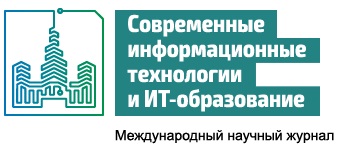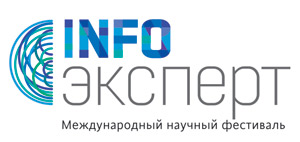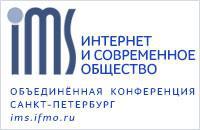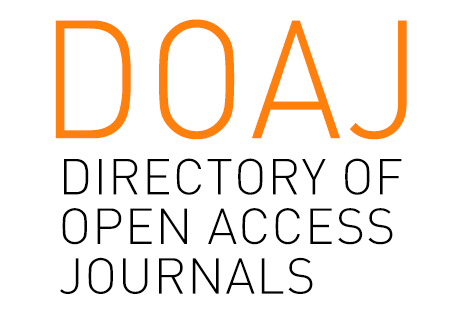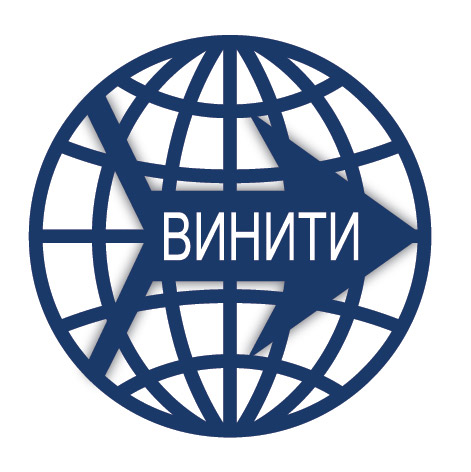Mathematical Modeling of Glacier Melting in the Arctic with Regard to Climate Warming
Abstract
The paper studies the initial boundary-edge problem for the non-stationary one-dimensional thermal conductivity equation, which models the temperature distribution in the glacier. The mathematical model has been constructed taking into account solid-liquid phase transitions. Data from meteorological stations were used to determine the model parameters, with the help of which the necessary physical and thermophysical characteristics of the calculation area were obtained. The finite volume method was used for numerical solution of the problem. The non-stationary periodic regime was investigated, temperature-depth dependences were plotted for each month and the depth of the active layer and the depth of zero annul amplitudes for two glaciers: the Vavilov Ice Cap and the Austre Gronfjordbreen were found. Glacier temperature regime forecast for the year 2100 are modelled for three global warming scenarios: a moderate RCP2.6, the RCP7 corresponding to current emissions and the RCP1.9 adopted at the Paris Agreement in 2015. The scenarios are based on the IPCC AR5 and SSP databases, and on the existing policy framework and stated policy intentions The IEA Stated Policies Scenario (STEPS). The plotted graphs clearly show that even the moderate RCP2.6 scenario (2°C warming) can lead to noticeable glacier thawing, while the RCP7 scenario would lead to unprecedented consequences. In turn, a scenario limiting climate warming to 1.5°C from pre-industrial levels (RCP1.9) would markedly slow glacial thawing. Having analysed the irreversible degradation of the ice cover at a warming of an additional 0.5°C, and considering the adverse effects of this warming on many areas, the need to contain the rate of temperature increase is clear. The simulations have clearly confirmed the impact of global warming on our planet's cryosphere.
References
2. Willis M.J., et al. Massive destabilization of an Arctic ice cap. Earth and Planetary Science Letters. 2018; 502:146-155. (In Eng.) doi: https://doi.org/10.1016/j.epsl.2018.08.049
3. Bushueva I.S., Glazovsky A.F., Nosenko G.A. Surge development in the western sector of the Vavilov Ice Cap, Severnaya Zemlya, 1963-2017. Led i Sneg = Ice and Snow. 2018; 58(3):293-306. (In Russ., abstract in Eng.) doi: https://doi.org/10.15356/2076-6734-2018-3-293-306
4. Golubev V.N. Modern fluctuations of the Vavilov Ice Cap on the Severnaya Zemlya. Materialy Glyatsiologicheskikh Issledovaniy = Data of Glaciological Studies. 1988; (85):196-204. Available at: https://istina.msu.ru/download/6747288/1eMRB0:LFS0dKYOWeq7qZiumLcva1dwwDM (accessed 10.09.2021). (In Russ., abstract in Eng.)
5. Chernov R.A., Kudikov A.V., Vshivtseva T.V., Osokin N.I. Estimation of the surface ablation and mass balance of Eustre Grønfjordbreen (Spitsbergen). Led i Sneg = Ice and Snow. 2019; 59(1):59-66. (In Russ., abstract in Eng.) doi: https://doi.org/10.15356/2076-6734-2019-1-59-66
6. Hagen J.O., Kohler J., Melvold K., Winther J.-G. Glaciers in Svalbard: mass balance, runoff and freshwater flux. Polar Research. 2003; 22(2):145-159. (In Eng.) doi: https://doi.org/10.3402/polar.v22i2.6452
7. Kohler J., James T.D., Murray T., Nuth C., Brandt O., Barrand N.E., Aas H.F., Luckman A. Acceleration in thinning rate on western Svalbard glaciers. Geophysical Research Letters. 2007; 34(18):L18502. (In Eng.) doi: https://doi.org/10.1029/2007GL030681
8. Van Pelt W.J.J., Kohler J., Liston G.E., Hagen J.O., Luks B., Reijmer C.H., Pohjola V.A. Multidecadal climate and seasonal snowconditions in Svalbard. Journal of Geophysical Research: Earth Surface. 2016; 121(11):2100-2117. (In Eng.) doi: https://doi.org/10.1002/2016JF003999
9. Małecki J. Accelerating retreat and high-elevation thinning of glaciers in central Spitsbergen. The Cryosphere. 2016; 10(3):1317-1329. (In Eng.) doi: https://doi.org/10.5194/tc-10-1317-2016
10. Nuth C., Kohler J., König M., von Deschwanden A., Hagen J.O., Kääb A., Moholdt G., Pettersson R. Decadal changes from a multi-temporal glacier inventory of Svalbard. The Cryosphere. 2013; 7(5):1603-1621. (In Eng.) doi: https://doi.org/10.5194/tc-7-1603-2013
11. Mavlyudov B.R., Savatyugin L.M., Solovyanova I.Yu. Reaction of Nordenskiold land glaciers, Spitsbergen, on climate change. Problemy Arktiki i Antarktiki = Arctic and Antarctic Research. 2012; (1):67-77. Available at: http://old.aari.ru/misc/publicat/paa/PAA91/PAA91-07(67-77).pdf (accessed 10.09.2021). (In Russ., abstract in Eng.)
12. Vasilenko E.V., Glazovsky A.F., Lavrentiev I.I., Macheret Yu.Ya. Changes of hydrothermal structure of Austre Gronfjordbreen and Fridtjovbreen Glaciers in Svalbard. Led i Sneg = Ice and Snow. 2014; 54(1):5-19. Available at: https://www.elibrary.ru/item.asp?id=21435626 (accessed 10.09.2021). (In Russ., abstract in Eng.)
13. Zinger E.M., Mikhalev V.I. Accumulation of snow on Spitsbergen glaciers. Materialy Glyatsiologicheskikh Issledovaniy = Data of Glaciological Studies. 1967; (13):86-100. (In Russ.)
14. Sosnovsky A.V., Macheret Yu.Ya., Glazovsky A.F., Lavrentiev I.I. Influence of snow cover on the thermal regime of a polythermal glacier in Western Spitsbergen. Led i Sneg = Ice and Snow. 2015; 55(3):27-37. Available at: https://www.elibrary.ru/item.asp?id=24169837 (accessed 10.09.2021). (In Russ., abstract in Eng.)
15. Lavrentiev I.I., Kutuzov S.S., Glazovsky A.F., Macheret Yu.Ya., Osokin N.I., Sosnovsky A.V., Chernov R.A., Cherniakov G.A. Snow thickness on Austre Grønfjordbreen, Svalbard, from radar measurements and standard snow surveys. Led i Sneg = Ice and Snow. 2018; 58(1):5-20. (In Russ., abstract in Eng.) doi: https://doi.org/10.15356/2076-6734-2018-1-5-20
16. Patankar S.V. Computation of Conduction and Duct Flow Heat Transfer. CRC Press, Taylor & Francis Group; 1991. 370 p. (In Eng.) doi: https://doi.org/10.1201/9781315139951
17. Krylov D.A., Sidnyaev N.I., Fedotov A.A. Mathematical modelling of temperature distribution. Matematicheskoe modelirovanie = Mathematical Models and Computer Simulations. 2013; 25(7):3-27. Available at: https://www.elibrary.ru/item.asp?id=21276892 (accessed 10.09.2021). (In Russ., abstract in Eng.)
18. Fedotov A.A., Kaniber V.V., Khrapov P.V. Analysis and prediction of changes in the temperature of the pure freshwater ice column in the Antarctic and the Arctic. International Journal of Open Information Technologies. 2021; 9(9):47-65. Available at: https://www.elibrary.ru/item.asp?id=46515792 (ac cessed 10.09.2021). (In Eng.)
19. Fedotov A.A., Kaniber V.V., Khrapov P.V. Analysis and forecasting of changes in the soil temperature distribution in the area of the city of Norilsk. International Journal of Open Information Technologies. 2020; 8(10):51-65. Available at: https://www.elibrary.ru/item.asp?id=44106800 (accessed 10.09.2021). (In Russ., abstract in Eng.)
20. Fedotov A.A., Kaniber V.V., Khrapov P.V. Forecast of the soil temperature in permafrost in response of climate warming. International Journal of Open Information Technologies. 2020; 8(6):53-61. Available at: https://www.elibrary.ru/item.asp?id=42969474 (accessed 10.09.2021). (In Russ., abstract in Eng.)
21. Biskaborn B.K., Smith S.L., Noetzli J., et al. Permafrost is warming at a global scale. Nature communications. 2019; 10:264. (In Eng.) doi: https://doi.org/10.1038/s41467-018-08240-4
22. Riahi K., van Vuuren D.P., Kriegler E., et al. The Shared Socioeconomic Pathways and their energy, land use, and greenhouse gas emissions implications: An overview. Global Environmental Change. 2017; 42:153-168. (In Eng.) doi: https://doi.org/10.1016/j.gloenvcha.2016.05.009
23. Pielke Jr. R., Burgess M.G., Ritchie J. Plausible 2005-2050 emissions scenarios project between 2°C and 3°C of warming by 2100. Environmental Research Letters. 2022; 17(2):024027. (In Eng.) doi: https://doi.org/10.1088/1748-9326/ac4ebf
24. Surkova E., Popov S., Tchabovsky A. Rodent burrow network dynamics under human‐induced landscape transformation from desert to steppe in Kalmykian rangelands. Integrative Zoology. 2019; 14(4):410-420. (In Eng.) doi: https://doi.org/10.1111/1749-4877.12392
25. Schepaschenko D., et al. Russian forest sequesters substantially more carbon than previously reported. Scientific Reports. 2021; 11:12825. (In Eng.) doi: https://doi.org/10.1038/s41598-021-92152-9
26. Andela N., et al. A human-driven decline in global burned area. Science. 2017; 356(6345):1356-1362. (In Eng.) doi: https://doi.org/10.1126/science.aal4108
27. Wasko C., Sharma A. Global assessment of flood and storm extremes with increased temperatures. Scientific Reports. 2017; 7:7945. (In Eng.) doi: https://doi.org/10.1038/s41598-017-08481-1
28. Taylor C.A., Schlenker W. Environmental Drivers of Agricultural Productivity Growth: CO2 Fertilization of US Field Crops. National Bureau of Economic Research. 2021. Working Paper 29320. (In Eng.) doi: https://doi.org/10.3386/w29320
29. Hannah L., Roehrdanz P.R., Krishna Bahadur K.C., et al. The environmental consequences of climate-driven agricultural frontiers. PLoS ONE. 2020; 15(2):e0228305. (In Eng.) doi: https://doi.org/10.1371/journal.pone.0228305
30. Parfenova E., Tchebakova N., Soja A. Assessing landscape potential for human sustainability and 'attractiveness' across Asian Russia in a warmer 21st century. Environmental Research Letters. 2019; 14(6):065004. (In Eng.) doi: https://doi.org/10.1088/1748-9326/ab10a8

This work is licensed under a Creative Commons Attribution 4.0 International License.
Publication policy of the journal is based on traditional ethical principles of the Russian scientific periodicals and is built in terms of ethical norms of editors and publishers work stated in Code of Conduct and Best Practice Guidelines for Journal Editors and Code of Conduct for Journal Publishers, developed by the Committee on Publication Ethics (COPE). In the course of publishing editorial board of the journal is led by international rules for copyright protection, statutory regulations of the Russian Federation as well as international standards of publishing.
Authors publishing articles in this journal agree to the following: They retain copyright and grant the journal right of first publication of the work, which is automatically licensed under the Creative Commons Attribution License (CC BY license). Users can use, reuse and build upon the material published in this journal provided that such uses are fully attributed.
